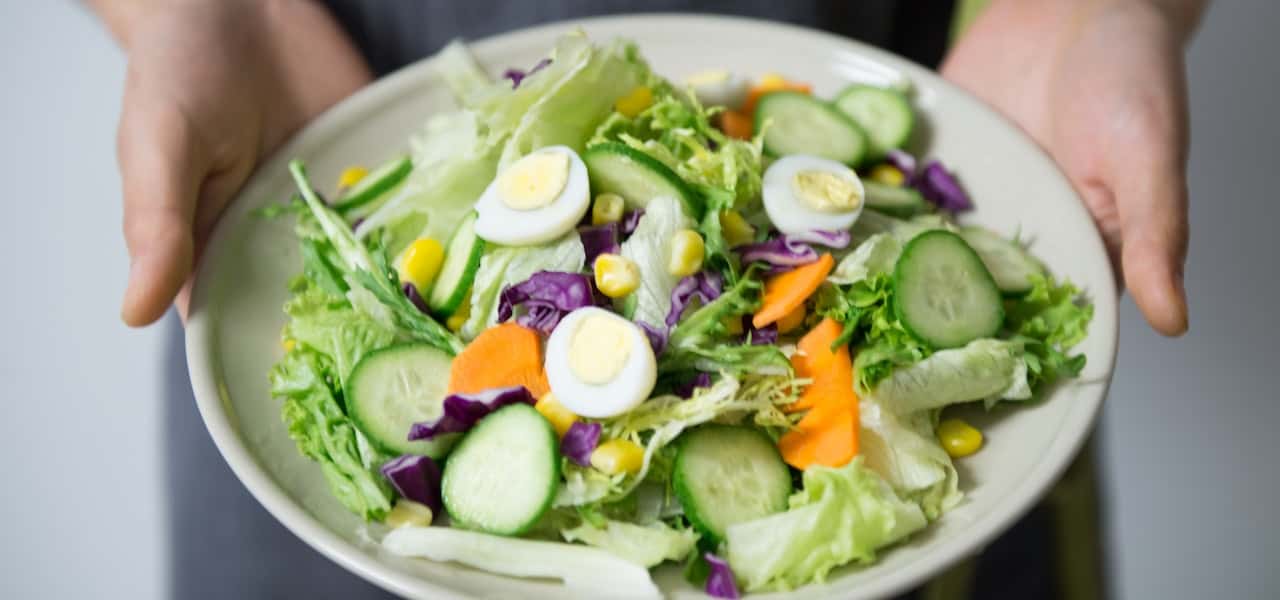Here is your complete guide to how much protein build muscle.
Introduction to How Much Protein Build Muscle
How much protein build muscle? Are you a fitness enthusiast looking to build muscle? If so, you’ve probably heard that protein is a crucial nutrient for muscle growth. But how much protein do you really need to achieve your fitness goals? In this comprehensive guide, we’ll debunk common myths and misconceptions about protein intake and muscle building, and provide evidence-based information on how much protein you actually need to build muscle effectively. So, let’s dive in and learn the truth about protein and muscle building!
Protein Basics
Before we delve into the details, let’s start with the basics. Protein is a macronutrient made up of amino acids, which are the building blocks of the body. It plays a critical role in various physiological functions, including muscle growth, repair, and maintenance. Protein can be found in both animal-based and plant-based sources, such as meat, fish, eggs, dairy products, legumes, nuts, seeds, and more. The recommended daily allowance (RDA) for protein varies based on factors like age, sex, activity level, and fitness goals. It’s essential to understand the basics of protein to determine how much you need to build muscle effectively.
Protein and Muscle Building
Protein is vital for muscle building because it provides the body with the necessary amino acids needed for muscle growth and repair. During resistance training or strength training exercises, muscle fibers undergo microscopic damage. Protein plays a crucial role in repairing these damaged muscle fibers and promoting muscle growth.
Additionally, protein synthesis, the process by which the body builds new proteins, is crucial for muscle building. Ensuring an adequate intake of protein supports protein synthesis and aids in muscle growth and recovery. It’s important to understand the science behind how protein supports muscle building to optimize your protein intake for optimal results.
Protein Requirements for Muscle Building
The amount of protein you need for muscle building depends on various factors, including your age, sex, activity level, and fitness goals. The RDA for protein is generally around 0.8 grams per kilogram of body weight per day for sedentary individuals. However, for fitness enthusiasts engaged in regular resistance training or strength training, higher protein intake is recommended.
Studies suggest that a protein intake of 1.6 to 2.2 grams per kilogram of body weight per day may be optimal for muscle building. It’s important to note that these are general guidelines, and individual protein requirements may vary. Consulting with a healthcare professional or a registered dietitian can help you determine the right protein intake for your specific needs.
Protein Timing and Distribution
In addition to the amount of protein you consume, the timing and distribution of protein intake also play a significant role in muscle building. The concept of an “anabolic window” refers to the period after a workout when the body is primed for protein synthesis. It was previously believed that consuming protein immediately after a workout was crucial for maximizing muscle growth.
However, recent research suggests that the anabolic window may be wider than previously thought, lasting up to 24 hours after a workout. This means that spreading out protein intake throughout the day may be just as effective as consuming it immediately after a workout. It’s essential to consider the timing and distribution of protein intake to optimize muscle building results.
How much protein should you be getting each day?
| Activity Level | Protein Intake (grams/kg of body weight) |
|---|---|
| Sedentary (little to no exercise) | 1.2 – 1.4 |
| Lightly Active (light exercise/sports 1-3 days/week) | 1.4 – 1.6 |
| Moderately Active (moderate exercise/sports 3-5 days/week) | 1.6 – 1.8 |
| Very Active (hard exercise/sports 6-7 days a week) | 1.8 – 2.0 |
| Extremely Active (very hard exercise/sports, physical job or 2x training) | 2.0 – 2.2 |

Protein Myths and Misconceptions
There are several common myths and misconceptions about protein intake and muscle building that need to be addressed. One of the most common myths is that “more protein is always better.” While protein is essential for muscle building, consuming excessive amounts of protein beyond your body’s requirements does not necessarily lead to more muscle growth.
The body has a limit to how much protein it can utilize for muscle building, and excessive protein intake may be metabolized or stored as fat, leading to weight gain rather than muscle growth. Another myth is that only animal-based proteins are effective for muscle building. While animal-based proteins are considered complete proteins as they contain all essential amino acids, plant-based proteins can also be effective for muscle building when combined appropriately to provide all essential amino acids. It’s important to understand that a well-balanced diet that includes a variety of protein sources can meet your protein needs for muscle building.
Read More About Protein in 8oz Steak.
Practical Tips for Meeting Protein Needs
Meeting your protein needs for muscle building doesn’t have to be complicated. Here are some practical tips to ensure you’re getting enough protein to support your muscle building goals:
- Calculate your protein needs: Use the recommended guidelines of 1.6 to 2.2 grams of protein per kilogram of body weight per day as a starting point, and adjust based on your individual needs and goals.
- Choose a variety of protein sources: Include a mix of animal-based and plant-based protein sources in your diet, such as lean meats, fish, eggs, dairy products, legumes, nuts, seeds, and tofu. This ensures that you’re getting a diverse range of amino acids to support muscle growth and repair.
- Distribute protein intake throughout the day: Aim to spread out your protein intake evenly throughout the day to optimize protein synthesis and muscle building. This can be achieved by including protein-rich foods in each meal and snack.
- Prioritize post-workout protein intake: While the anabolic window may be wider than previously thought, consuming protein within an hour after your workout can still be beneficial for muscle recovery and growth. Consider a protein-rich snack or shake post-workout to aid in muscle repair.
- Pay attention to protein quality: Protein quality refers to the completeness and bioavailability of amino acids in a protein source. Animal-based proteins are generally considered complete proteins, while plant-based proteins may require combining different sources to ensure all essential amino acids are present. Be mindful of the quality of protein sources you consume.
- Consider protein supplements: Protein supplements, such as whey protein powder or plant-based protein powder, can be convenient options to help you meet your protein needs, especially for those with dietary restrictions or limited access to protein-rich foods. However, it’s important to prioritize whole food sources of protein whenever possible.
What Are The Best Sources Of Protein
| Protein Source | Protein Content (per 100g) |
|---|---|
| Chicken breast (cooked) | 31g |
| Salmon (cooked) | 25g |
| Greek yogurt | 10g |
| Eggs | 13g |
| Quinoa (cooked) | 4g |
| Lentils (cooked) | 9g |
| Chickpeas (cooked) | 9g |
| Tofu | 8g |
| Cottage cheese | 11g |
| Almonds | 21g |
| Whey protein powder | 20-25g per serving |
| Black beans (cooked) | 8g |

FAQs about How Much Protein Build Muscle
How much protein do you really need to build muscle?
The amount of protein needed to build muscle varies depending on factors such as age, weight, activity level, and overall fitness goals. However, research suggests that a range of 1.6 to 2.2 grams of protein per kilogram of body weight per day is generally effective for most individuals looking to build muscle. It’s important to note that consuming more protein than your body needs does not necessarily result in increased muscle growth, as excess protein is typically metabolized or stored as fat.
Is 200g of protein a day enough to build muscle?
While 200 grams of protein per day may seem like a substantial amount, it may not be necessary or effective for everyone to build muscle. Consuming protein within the recommended range of 1.6 to 2.2 grams per kilogram of body weight per day is usually sufficient for most individuals, regardless of the absolute amount in grams. It’s also essential to consider the overall balance of your diet and other factors such as exercise, rest, and hydration in conjunction with protein intake for optimal muscle building.
Read More About How to Lose Thigh Fat: A Comprehensive Guide for Women.
Is 100g of protein enough to keep muscle?
A protein intake of 100 grams per day may be sufficient to maintain muscle mass for some individuals, depending on their body weight, activity level, and overall diet. However, it’s important to note that protein needs for muscle maintenance may vary depending on factors such as age, gender, and fitness goals. It’s best to calculate your protein needs based on your individual factors and aim to meet the recommended guidelines of 1.6 to 2.2 grams of protein per kilogram of body weight per day to ensure adequate muscle maintenance.
Read More About Almonds – The Perfect Snack for Weight Loss.
How to eat 150 grams of protein a day?
Consuming 150 grams of protein per day can be achievable with proper meal planning and food choices. Here are some tips on how to eat 150 grams of protein a day:
- Include protein-rich foods in each meal: Incorporate protein-rich foods such as lean meats, fish, eggs, dairy products, legumes, nuts, seeds, and tofu in every meal.
- Choose high-protein snacks: Opt for protein-rich snacks such as Greek yogurt, cottage cheese, boiled eggs, or protein bars to increase your protein intake throughout the day.
- Use protein supplements: Consider incorporating protein supplements, such as whey protein powder or plant-based protein powder, into your diet if needed to help reach your protein goals.
- Plan protein-packed meals: Plan meals in advance that include protein-rich ingredients, such as grilled chicken with vegetables, fish with quinoa and roasted vegetables, or tofu stir-fry with mixed vegetables and brown rice.
- Prioritize protein at post-workout meals: Consuming protein after your workouts can aid in muscle recovery and growth. Include a protein-rich meal or snack after your workouts to help meet your daily protein goals.
- Consult with a registered dietitian: If you’re unsure about how to plan your meals to meet your protein goals, consider consulting with a registered dietitian who can provide personalized guidance and recommendations based on your specific needs and goals.
By incorporating a variety of protein-rich foods into your meals, planning protein-packed meals and snacks, and potentially using protein supplements if needed, you can easily reach your goal of consuming 150 grams of protein per day to support muscle building and overall fitness goals.
What is a Burpee? The Ultimate Guide to this High-Intensity Exercise
Conclusion
Protein is a crucial nutrient for muscle building, and understanding how much protein you need is essential for optimizing your fitness goals. By debunking common myths and misconceptions, and following evidence-based information on protein intake and muscle building, you can effectively support muscle growth and recovery. Remember to calculate your protein needs, choose a variety of protein sources, distribute protein intake throughout the day, prioritize post-workout protein intake, pay attention to protein quality, and consider protein supplements if needed. With the right approach to protein intake, you can take your muscle building journey to the next level and achieve your fitness goals.
Read More About Cardio or Weight First?
Read Also: The Surprising Health Benefit of Celery Tea.

